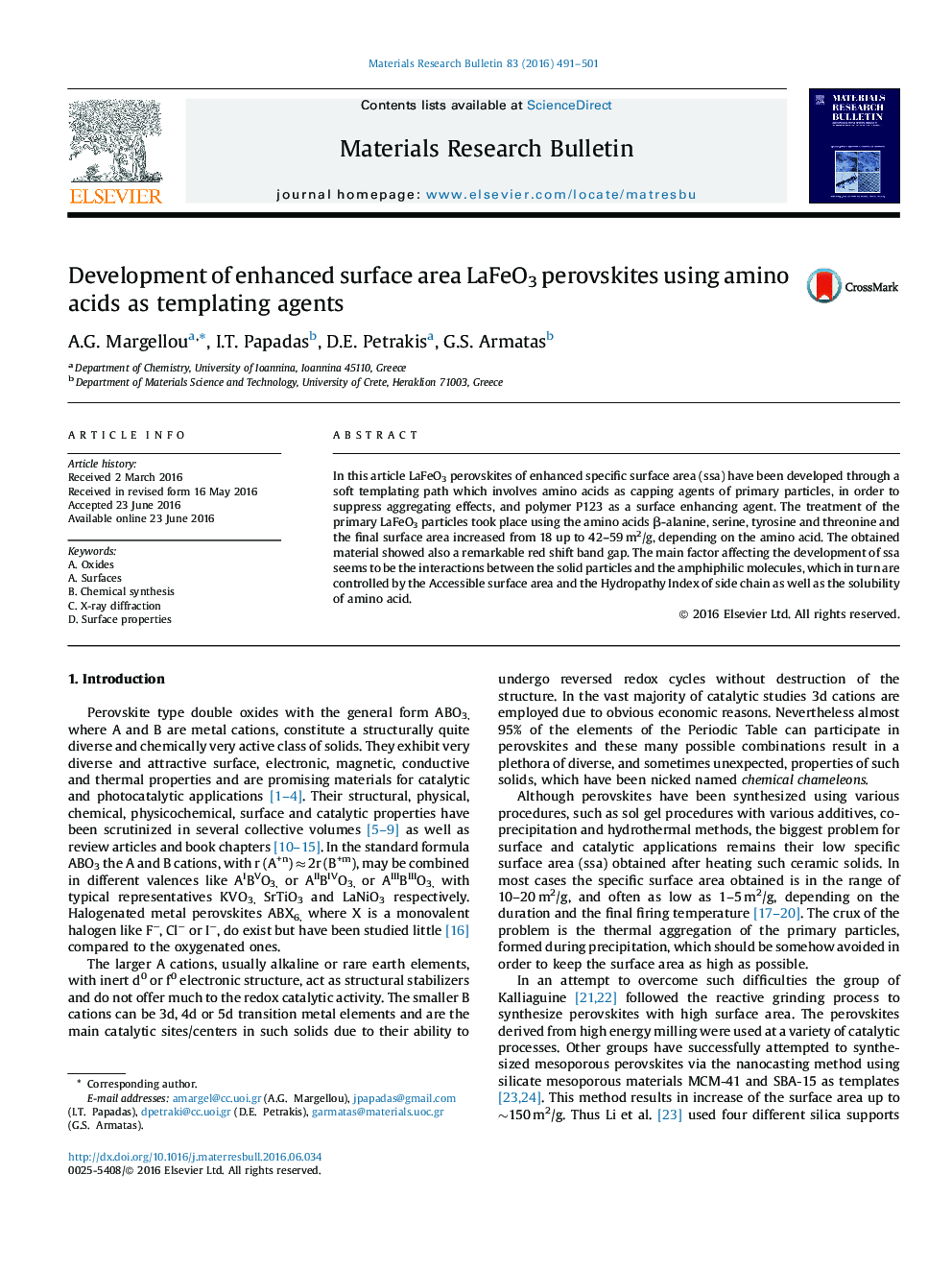| Article ID | Journal | Published Year | Pages | File Type |
|---|---|---|---|---|
| 1487059 | Materials Research Bulletin | 2016 | 11 Pages |
•Treatment of LaFeO3 with amino acids led to increase of ssa from 18 to 42–59 m2/g.•Accessible surface area and Hydropathy Index of side chain of amino acids were crucial factors.•More effective was Alanine as the smaller and more hydrophilic amino acid.•Less effective was Tyrosine which was the larger and more hydrophobic amino acid.
In this article LaFeO3 perovskites of enhanced specific surface area (ssa) have been developed through a soft templating path which involves amino acids as capping agents of primary particles, in order to suppress aggregating effects, and polymer P123 as a surface enhancing agent. The treatment of the primary LaFeO3 particles took place using the amino acids β-alanine, serine, tyrosine and threonine and the final surface area increased from 18 up to 42–59 m2/g, depending on the amino acid. The obtained material showed also a remarkable red shift band gap. The main factor affecting the development of ssa seems to be the interactions between the solid particles and the amphiphilic molecules, which in turn are controlled by the Accessible surface area and the Hydropathy Index of side chain as well as the solubility of amino acid.
Graphical abstractFigure optionsDownload full-size imageDownload as PowerPoint slide
